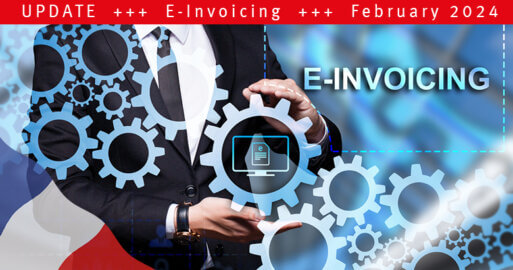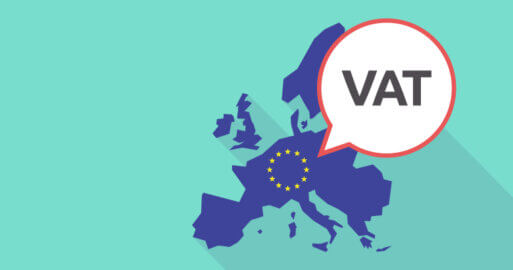E-Invoicing and Customization – Is It a Good Idea?

Optimizing your processes gives you competitive advantages. One of the key ways to optimize your processes is to adopt e-invoicing, and electronically exchange invoices with your business partners. In recent years, numerous standards have been developed to increase the interoperability and efficiency of this exchange process. These include ZUGFeRD, XRechnung and Peppol. However, despite the obvious advantages, some companies are reluctant to adopt these standards unchanged. Individual solutions often have disadvantages that cannot necessarily be offset by the hoped-for advantages of in-house programming. Find out why this is the case in this article by SEEBURGER e-invoicing expert Rolf Holicki.
Standardized e-invoicing solutions versus individual solutions
E-Invoicing standards such as ZUGFeRD, XRechnung and Peppol provide a framework for e-invoicing which aims to improve interoperability and facilitate integration into an organization’s ecosystem. These standards are the result of careful industry consultation to cover a wide range of requirements.
Nevertheless, many companies decide to modify these standards or develop their own customized solutions with the aim of better mapping their own business processes. However, existing solutions are often overlooked or underestimated in the pursuit of individualization.
Why may a customized e-invoicing solution cause problems?
Customizing standard e-invoicing solutions can delay the implementation of efficient processes, waste resources and even complicate business relationships with partners who are already using standardized solutions. As a result, companies are often unable to fully benefit from the fast and cost-effective electronic invoice exchange that the standards make possible.
In the following, we will take a closer look at the specific challenges that individualized e-invoicing solutions can entail and discuss the advantages of standard solutions.
Challenges and consequences of individualized e-invoicing solutions
Even though companies may have good reasons for customizing standardized e-invoicing solutions when integrating them into their ecosystems, it is important to keep the following potential disadvantages in mind:
- Wasted resources and redundancy
Developing their own e-invoicing solutions often requires companies to unnecessarily devote resources to essentially redeveloping existing, well-established systems. - Interoperability issues
Adapting defined invoicing standards can lead to compatibility problems with business partners who use the standard unchanged. This may require further adaptations, and therefore further costs. - Legal and regulatory risks
Some standards, such as ZUGFeRD, are designed to meet the legal requirements of several countries at once. Individual adjustments can lead to invoices no longer being compliant in one of your markets. - Competitive disadvantages
Rejecting or adapting e-invoicing standards can cause problems for your business partners, who will also have to adapt to different invoice formats. Delays, obstacles and inefficient processes hamper business growth. - Higher costs
Development, customization and maintenance costs for individual e-invoicing solutions can grow very quickly. Added to these are potential and opportunity costs for delays, lack of compliance and missed business opportunities.
The dilemma of customizing e-invoicing solutions
Even if some scenarios require you to customize processes, whether driven by innovation or the need to connect legacy systems, it is crucial to find a balance between individualization and standardization. The right balance lets you benefit from best practices while accommodating specific requirements.
Below are a few suggestions on how to ensure that standard e-invoicing solutions are considered and accepted in your company before trying to customize.
- Educate and raise awareness
Raising awareness and educating decision-makers and relevant employees plays a key role in the acceptance of standard solutions. This can be achieved through workshops, training and discussions about the benefits of standard solutions and the risks that individualized in-house solutions can entail. - Share success stories
Sharing success stories of other companies that have benefited from implementing standardized e-invoicing formats can help allay concerns. They are concrete examples of how adopting standards can lead to cost savings and efficiency gains. - Create a culture that welcomes innovation
A culture open to innovation increases the acceptance of external ideas and solutions. Companies can achieve this by promoting a corporate culture which values and supports cooperation, continuous learning and a willingness to adapt to new practices and technologies. - Engage in partnerships and industry exchange
Engaging with industry peers and participating in best practice dialogues can also be helpful. Partnerships with other companies and industry associations can help address concerns and build trust in external solutions. - Do a cost-benefit analysis
Conducting an objective cost-benefit analysis usually makes the advantages and disadvantages of e-invoicing standards versus an individual solution very clear. This makes it easier to make an informed decision. - Understand the flexibility offered by e-invoicing standards
It is important to recognize that e-invoicing standards offer some flexibility in integrating with existing systems and can be adapted to specific needs without violating the basic principles of standardization.
What are the long-term advantages of using a standardized e-invoicing solution?
Although individual solutions may be tailored to internal company processes, the advantages of standardized e-invoicing solutions still often outweigh the disadvantages.
- Cost efficiency
Using standards lets a company save money on IT development, customization and maintenance. - Agility and scalability
Standardized solutions make it easier to rapidly scale processes and quickly adapt to changing market conditions. - Improved business relationships
Compliance with e-invoicing standards can strengthen business relationships and facilitate new partnerships. - Compliance and reduced risk
Established standards ensure that companies comply with legal requirements and minimize legal risk.
SEEBURGER – your partner for successful e-invoicing adoption
SEEBURGER, a global provider of business integration solutions, can help companies make the transition to standardized e-invoicing solutions. Whether connecting to e-invoicing networks such as Peppol or B2G and B2B portals or exchanging electronic invoices in any desired format and in over 35 countries – with SEEBURGER e-invoicing services you can automate and manage all processes for incoming and outgoing invoices to and from ERP systems.
Webcast On Demand
How can SEEBURGER support your e-invoicing needs? Take a look at our webcast on demand.
Watch nowThank you for your message
We appreciate your interest in SEEBURGER
Get in contact with us:
Please enter details about your project in the message section so we can direct your inquiry to the right consultant.
Written by: Rolf Holicki
Rolf Holicki, Director BU E-Invoicing, SAP&Web Process, is responsible for the SAP/WEB applications and digitization expert. He has more than 25 years of experience in e-invoicing, SAP, Workflow and business process automation. Rolf Holicki has been with SEEBURGER since 2005.





